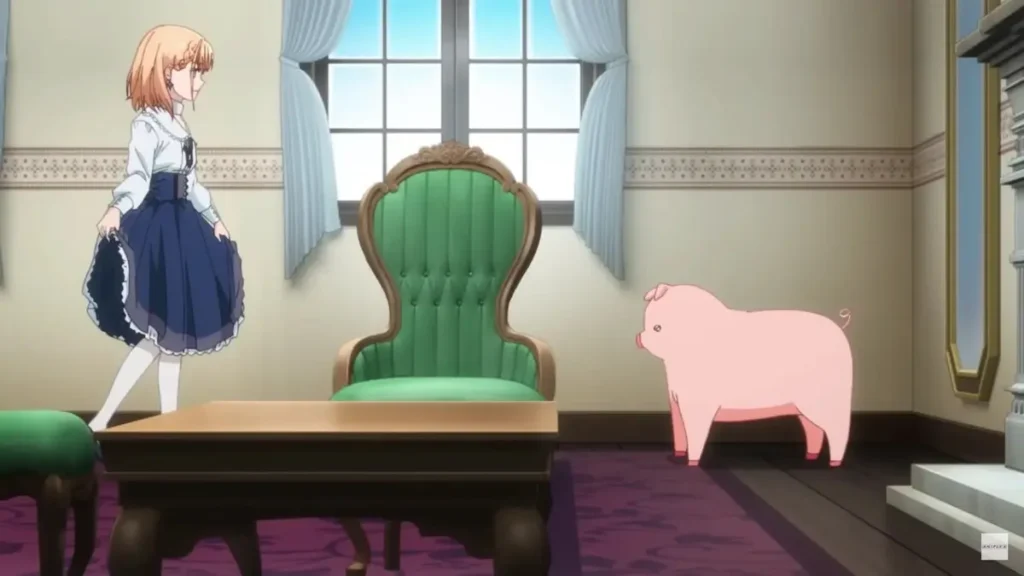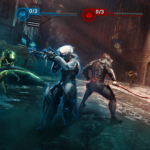When I first stumbled upon the tale of Butareba, I was instantly captivated. It’s not every day you come across a story about a man who transforms into a pig, after all. But as I delved deeper into this peculiar narrative, I realized it was so much more than just a quirky premise. It’s a profound exploration of humanity, identity, and the unexpected twists life can throw our way.
The Origins of Butareba
Before we dive into the meat of the story (pun intended), let’s talk about where Butareba came from. While researching, I couldn’t pinpoint an exact origin. Is it a modern fairy tale? An obscure folktale from some far-off land? The mystery only adds to its allure.
What I did discover is that stories of human-to-animal transformation have been around for centuries. From Ovid’s “Metamorphoses” to Kafka’s “The Metamorphosis,” the idea of suddenly finding oneself in a different body has long fascinated storytellers and audiences alike.
The Plot Unfolds
So, what exactly happens in Butareba? Here’s a breakdown of the key events:
- We meet our protagonist (let’s call him Hiro for now) living a typical, perhaps even mundane, human life.
- Through circumstances that vary depending on the version of the story, Hiro suddenly transforms into a pig.
- Hiro must navigate his new life as a pig while retaining his human consciousness.
- Along the way, he encounters various challenges, forms unexpected relationships, and gains new perspectives on life.
- The story culminates in a resolution that may or may not involve Hiro returning to human form (more on that later).
Themes Explored in Butareba
As I reflected on Butareba, several powerful themes emerged:
Identity and Self-Perception
Imagine waking up one day to find you’re no longer human. How would that change your sense of self? Butareba forces us to confront questions about what truly defines us. Is it our physical form, our memories, our relationships?
Hiro’s journey challenges our assumptions about identity and makes us ponder: If we lost our human appearance, would we still be “us”?
Societal Norms and Acceptance
Once transformed, Hiro faces a world that no longer recognizes him as human. This aspect of the story is a poignant commentary on how society treats those who are different. It reminded me of times in my own life when I felt like an outsider, though admittedly never to the extent of being an actual pig!
The Human-Animal Connection
Butareba offers a unique perspective on our relationship with animals. By putting a human consciousness into a pig’s body, the story encourages empathy and consideration for the creatures we often overlook or mistreat. It made me think twice about my own interactions with animals and the ethical implications of how we use them.
Transformation and Adaptability
Hiro’s sudden change forces him to adapt quickly to a completely new way of life. This resonates with anyone who’s ever faced unexpected life changes. While most of us won’t turn into pigs, we all face transitions that require us to adapt and grow.
Character Analysis: Hiro’s Journey
Let’s take a closer look at our protagonist’s evolution throughout the story:
1. Pre-Transformation Hiro: Often portrayed as somewhat complacent or unfulfilled in his human life.
2. Newly Transformed Hiro: Shocked, confused, and struggling to come to terms with his new reality.
3. Adapting Hiro: Learning to navigate the world as a pig, often with humorous mishaps along the way.
4. Enlightened Hiro: Gaining new insights about life, society, and himself through his experiences.
What struck me most about Hiro’s character arc was how relatable it felt, despite the fantastical premise. Haven’t we all had moments where we felt completely out of our element, forced to adapt to new circumstances?
The Supporting Cast
While Hiro is the heart of the story, Butareba introduces us to a colorful cast of supporting characters:
- The Farmer: Often a kindly figure who takes in the transformed Hiro, unaware of his true nature.
- Other Farm Animals: Potential friends or rivals for Hiro as he adjusts to life in the barnyard.
- Human Friends/Family: Characters who may or may not recognize Hiro in his pig form, leading to poignant or comedic interactions.
- The Antagonist: In some versions, there’s a character who knows Hiro’s secret and threatens to expose or exploit him.
Each of these characters plays a crucial role in Hiro’s journey, offering different perspectives and challenges along the way.
Symbolism in Butareba
As I dug deeper into the story, I couldn’t help but notice the rich symbolism woven throughout:
- The Pig: Often associated with gluttony or uncleanliness in various cultures, the choice of a pig as Hiro’s new form is significant. It challenges us to look beyond surface-level judgments.
- The Farm: Represents a simpler way of life, contrasting with Hiro’s former human existence.
- Food: Takes on new meaning as Hiro grapples with his changed relationship to what he eats and how he’s perceived as a potential food source himself.
- Mud: Could symbolize Hiro’s initial feelings of being “stuck” in his new life, but also represents a return to nature and simple pleasures.
Cultural Impact and Interpretations
While Butareba might not be a household name (yet), its themes resonate across cultures. I’ve seen similar stories in various forms of media:
- In literature, works like “Animal Farm” by George Orwell use animal transformations to comment on society.
- Films like “Porco Rosso” by Studio Ghibli feature human-to-animal transformations as central plot points.
- In folklore, shapeshifting tales are common across many cultures, often serving as moral lessons or cautionary tales.
Butareba fits into this rich tradition while offering its own unique spin on the concept.
Philosophical Questions Raised by Butareba
As I pondered the story, several philosophical questions kept surfacing:
- If our consciousness remains unchanged, does our physical form matter?
- How much of our identity is tied to how others perceive us?
- What can we learn about humanity by viewing it from an outsider’s perspective?
- Is there inherent value in experiencing life from a radically different point of view?
These questions don’t have easy answers, but that’s what makes Butareba such a thought-provoking tale.
The Ending: To Return or Not to Return?
One of the most debated aspects of Butareba is its ending. Does Hiro eventually return to human form, or does he choose to remain a pig? Both possibilities offer intriguing implications:
- Returning to Human Form: Suggests a completion of the hero’s journey, with Hiro returning changed but wiser.
- Remaining a Pig: A more subversive ending, implying that Hiro has found greater fulfillment or truth in his new life.
Personally, I’m torn on which ending I prefer. There’s something satisfying about a return to humanity, but the idea of choosing to remain transformed is fascinatingly unconventional.
Lessons We Can Learn from Butareba
Reflecting on the story, I’ve identified several valuable takeaways:
1. Empathy is crucial: Walking (or trotting) in someone else’s hooves can radically change our perspective.
2. Adaptability is a superpower: Life can change in an instant, and our ability to adjust is vital.
3. Identity is complex: We are more than our physical bodies or societal roles.
4. Appreciate the simple things: Sometimes it takes a drastic change to help us see the beauty in everyday life.
5. Question societal norms: Just because something is accepted doesn’t mean it’s right or immutable.
Creating Your Own “Butareba Moment”
While we can’t literally transform into pigs, we can create our own “Butareba moments” to gain new perspectives:
- Try a day living as a different version of yourself (e.g., change your routine completely).
- Volunteer at an animal sanctuary to gain a new appreciation for non-human lives.
- Immerse yourself in a completely unfamiliar culture or environment.
- Take on a challenge that forces you out of your comfort zone.
These experiences, while less dramatic than Hiro’s, can still offer profound insights.
The Future of Butareba
As I wrap up this exploration of Butareba, I can’t help but wonder about its future. Will this tale gain more widespread recognition? Could we see adaptations in film or television? The story’s rich themes and unique premise certainly offer plenty of material for creative interpretations.
Conclusion: The Lasting Impact of a Pig’s Tale
Butareba: The Story of a Man Turned into a Pig might seem like a simple, even silly premise at first glance. But as we’ve explored, it’s a tale rich with meaning, asking profound questions about what it means to be human, how we relate to the world around us, and how we handle life’s unexpected transformations.
As I reflect on Hiro’s journey from man to pig, I’m reminded of the transformations we all undergo throughout our lives. While they may not be as dramatic as suddenly sprouting a curly tail, they’re no less significant. Butareba encourages us to embrace change, to look at the world from new perspectives, and to find meaning in unexpected places.
So the next time life throws you a curveball, or you feel like you’ve been turned into a metaphorical pig, remember Hiro’s story. Embrace the change, wallow in the mud of new experiences, and see what pearls of wisdom you might find. After all, isn’t life itself a series of transformations, each one offering us the chance to see the world anew?







